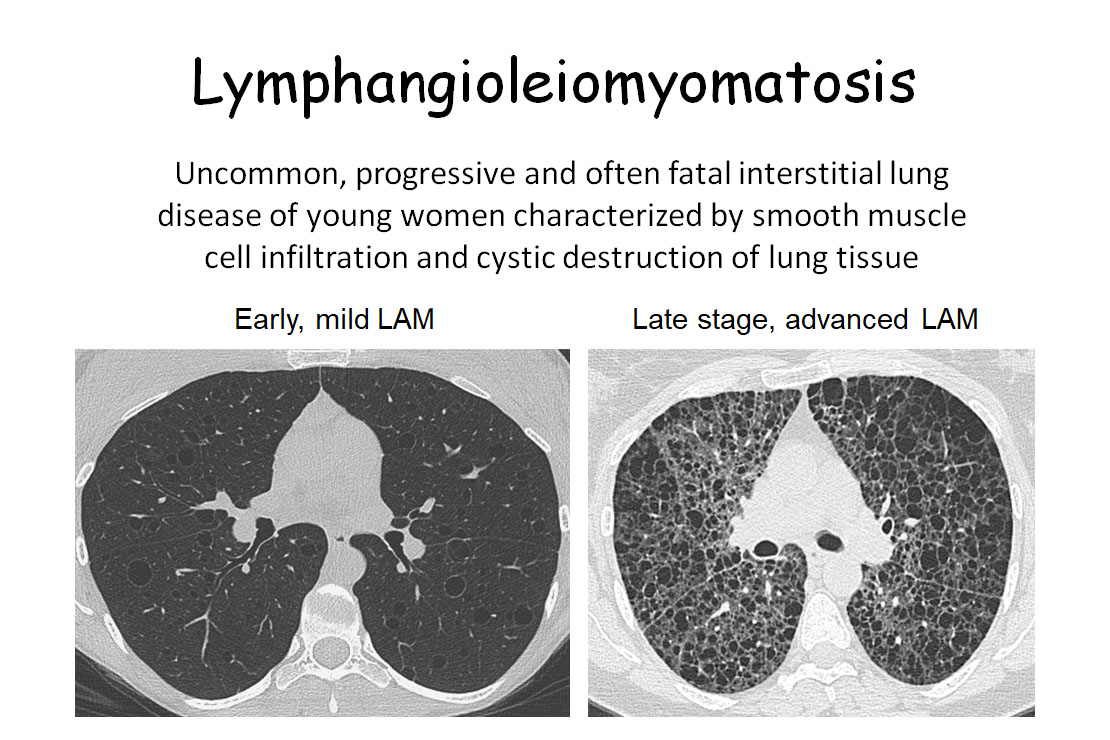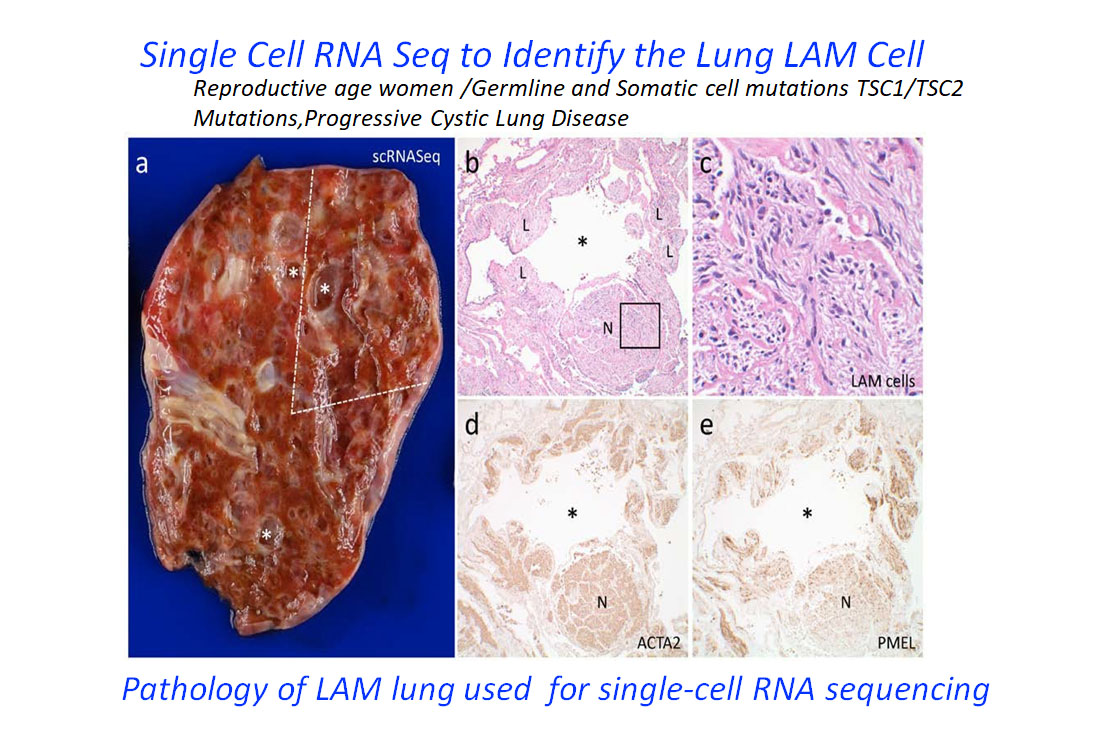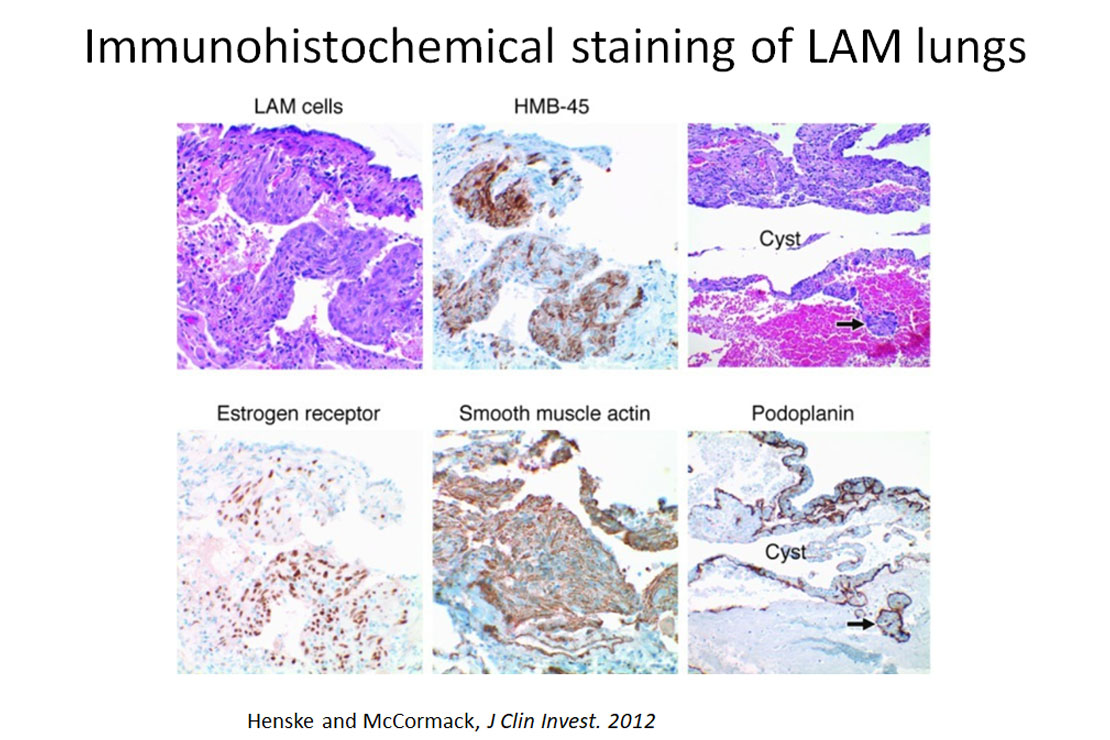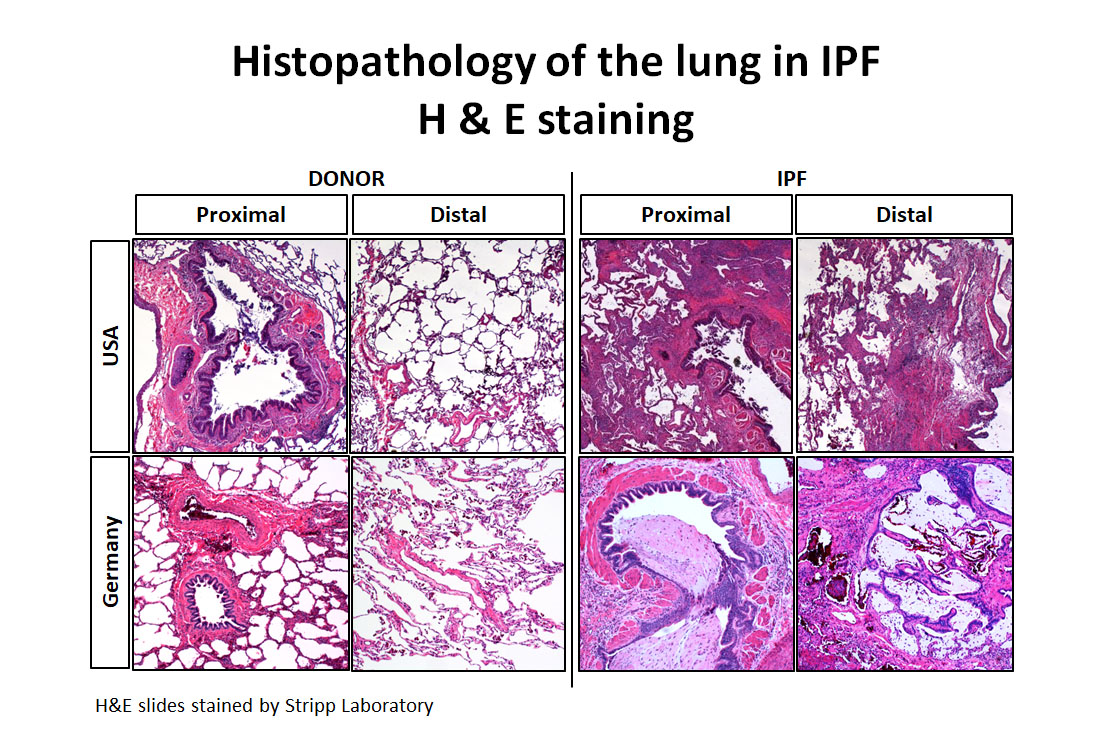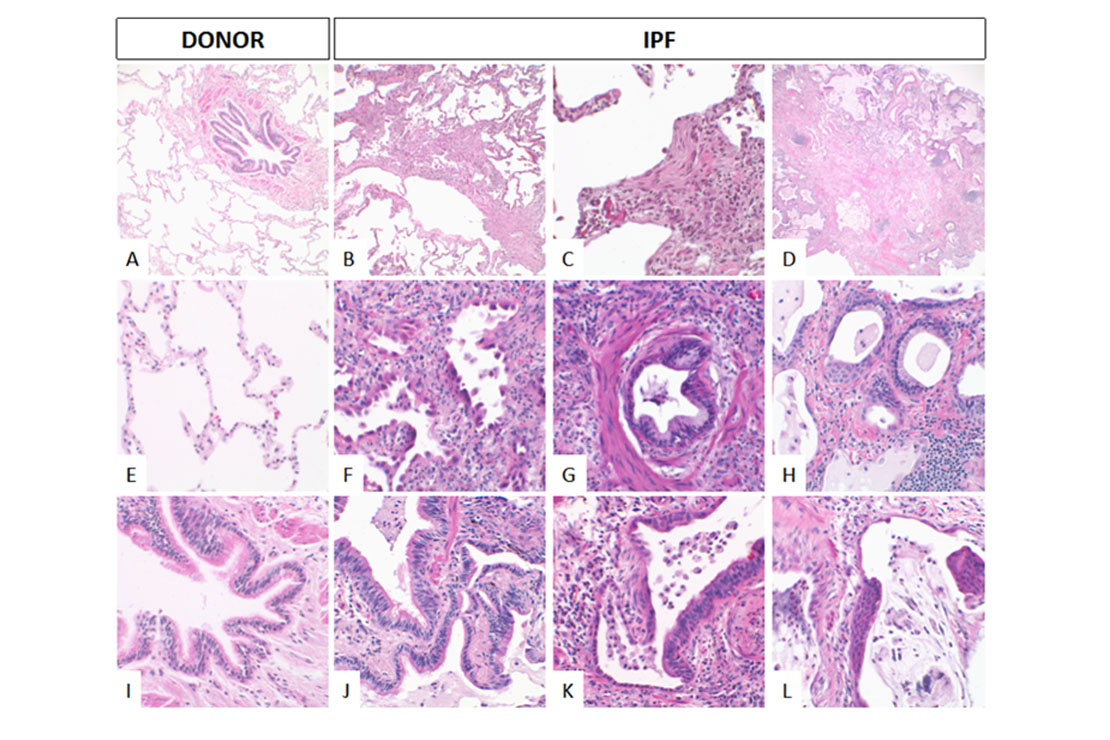Lymphangioleiomyomatosis (LAM)
Uncommon, progressive and often fatal interstitial lung disease of young women characterized by smooth muscle cell infiltration and cystic destruction of lung tissue.
Identification of the lymphangioleiomyomatosis cell and its uterine originLAM transcriptome (Query of gene, cell type, cell-cell interaction, LAMCORE, LAM immune subtypes)
LAM epigenetic (snATAC-seq)
Idiopathic Pulmonary Fibrosis (IPF)
Idiopathic pulmonary fibrosis (IPF) is a type of chronic scarring lung disease characterized by a progressive and irreversible decline in lung function. Symptoms typically include gradual onset of shortness of breath and a dry cough. Other changes may include feeling tired, and abnormally large and dome shaped finger and toenails (nail clubbing).Complications may include pulmonary hypertension, heart failure, pneumonia, or pulmonary embolism.
IPF scRNA-seq gene queryIPF scRNA-seq cell query
IPF AT2 RNA-seq gene query
IPF AT2 RNA-seq diff gene query
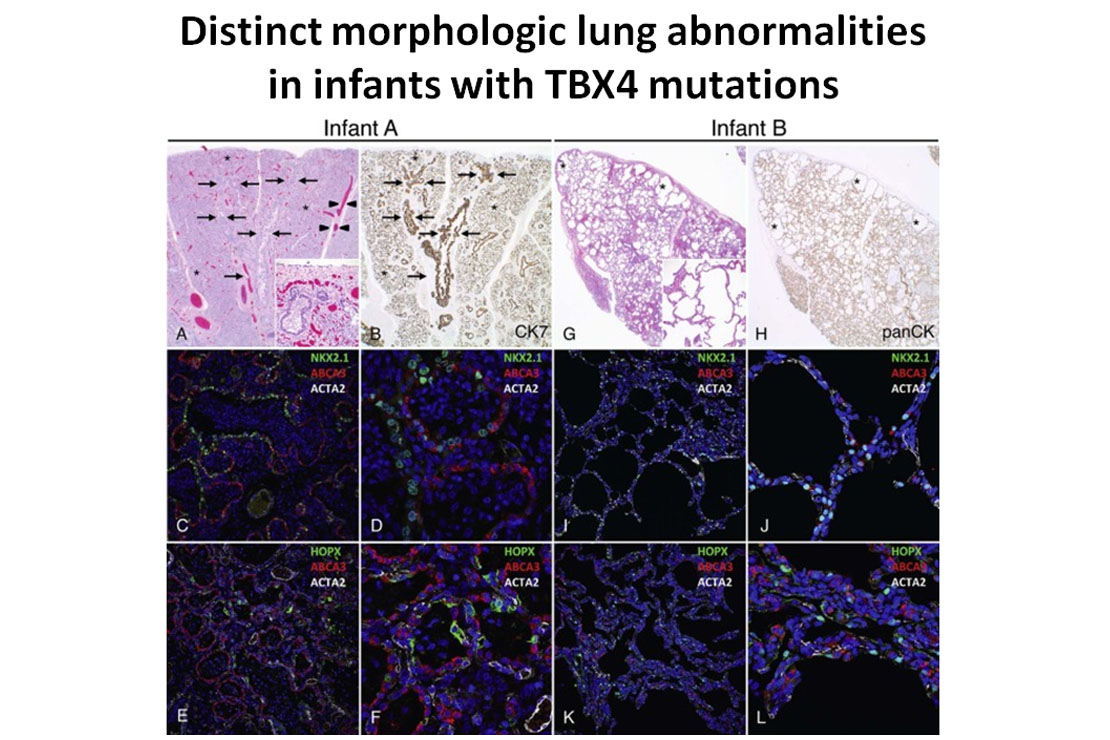
TBX4 Mutation
T-box transcription factor Tbx4 is a transcription factor that belongs to T-box gene family that is involved in the regulation of embryonic developmental processes.The transcription factor is encoded by the TBX4 gene located on human chromosome 17. Mutations in the TBX4 that cause small patella syndrome are also associated with childhood-onset pulmonary arterial hypertension (PAH).

ABCA3 Deficiency
ABCA3 transporter deficiency is a genetic disorder that is increasingly recognized as a cause of RDS in term babies in whom congenital deficiency of surfactant B and abnormalities of surfactant protein C have been excluded. It should be considered in mature babies who develop severe RDS.
TBA
Cystic Fibrosis (CF)
Cystic fibrosis (CF) is a genetic disorder that affects mostly the lungs, but also the pancreas, liver, kidneys, and intestine. Long-term issues include difficulty breathing and coughing up mucus as a result of frequent lung infections. Other signs and symptoms may include sinus infections, poor growth, fatty stool, clubbing of the fingers and toes, and infertility in most males.
